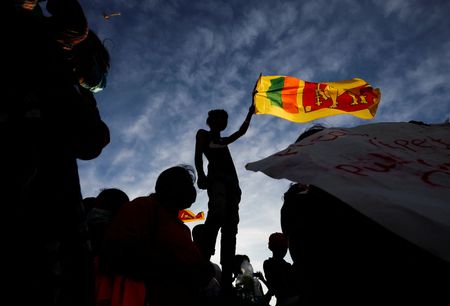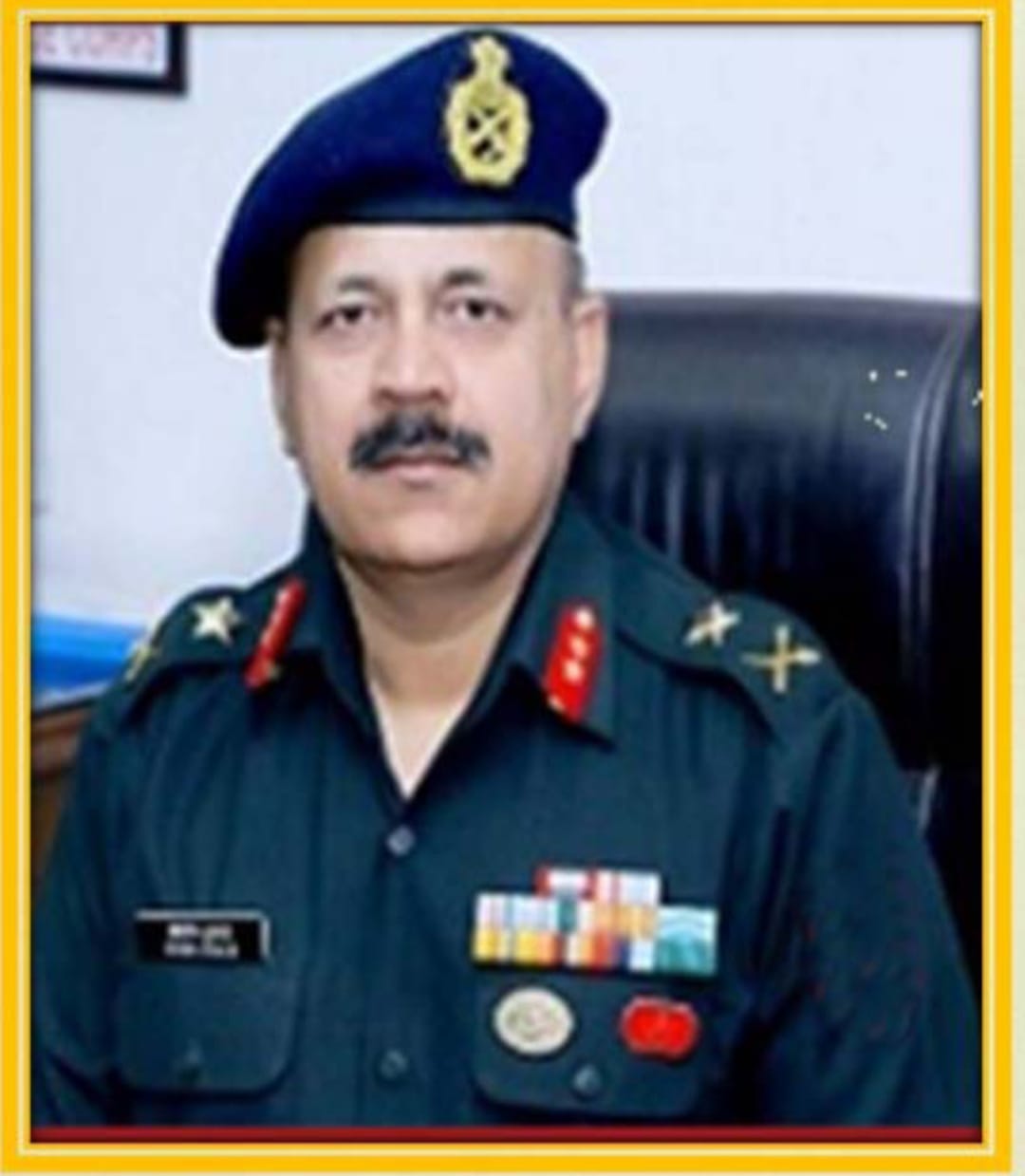
Chinese Hand Behind Sri Lanka’s Crisis and The Indian Dilemma

While the economic crisis has been in the making for over a decade in Sri Lanka, but the way it has unfolded is beyond comprehension. The visuals of citizens of the nation entering the Presidential palace, the PM’s residence, national broadcaster and so many other Government offices and buildings is an indicator of rampant lawlessness in our neighbouring country.
Even despite the intervention from the Sri Lankan defence forces and police, law and order has not been restored to normalcy though emergency has been declared by the acting President, Ranil Wickremsinghe. The previous President Gotabaya Rajapaksa initially moved to Male and has now shifted to Singapore. He has resigned and sent the documents to the speaker.
It is learnt that efforts are underway for the formation of another Government to address the current crisis, which is to prevent a total collapse of the nation. It is essential that a conducive environment is created, and a meaningful discussion undertaken to get fresh loans from IMF and other international institutions on priority to put the economy back on track.
While it is most critical to discuss and devise measures to mitigate the current crisis, it is also important to take a sneak peek into the reasons of this economic mess as a few solutions might come out of it.
A closer analysis will reveal that three P’s are accountable for the current economic crisis of Sri Lanka – Politicians (P 1), Public (P 2) and PRC (P 3).
While the current economic crisis has been in the making for over a decade and all political parties have made their contribution cutting across party lines for this downward fall, of course a large chunk of the blame can be attributed to the Rajapaksa clan, and this is probably the very reason why the public is hostile towards them and is expressing their anger in this way towards the entire political class in general and Rajapaksa clan in particular.
Now coming to the next P 2, which is public. The agitated mass today is also responsible for the current day mess as they never held the Government accountable for the freebies that they were enjoying previously. Alongwith this, the people of the nation enjoyed the lowest taxes in the world. It disregarded as to what was happening to the economic state of the nation. It was the responsibility of the public too to raise their voice at that time as against protesting now when the situation has collapsed. This is a warning call for the citizens of India too wherein they need to be conscious of the Government’s spending both at Central and State Government levels.
Since PRC (People’s Republic of China) as P 3 is the main contributor of this economic crisis, a relatively detailed analysis will be ‘in order’. China has been conscious of its vulnerabilities related to the security of its energy movement through Indian Ocean including the vulnerabilities through narrow Malacca strait and therefore, China has made substantial inroads in Sri Lanka. From nowhere, it suddenly became the second highest lender to Sri Lanka and holds more than 10% of foreign debt of Sri Lanka.
It also exploited the Sri Lankan inability to pay its dues to USA in 2017 and took Hambantota port on Sri Lanka’s southern portion on 99-years lease. It did the same thing with the Colombo city port project and took it on lease for 99-years. Not only this, it did not agree to restructure its loans to Sri Lanka and did not provide them with additional funds resulting in Sri Lanka defaulting on international loan repayment obligations from May 22 onwards. Not only this, China is also not facilitating an early bailout package from IMF which could have resulted in aiding the current economic crisis.
Sri Lanka will continue on the downward spiral that it is on right now until Sri Lanka is bailed out. Even in this crisis, China is sitting tight without offering any assistance and is watching Sri Lanka collapse. China has also invested substantially in the Rajapaksa clan on a personal level without any concern for the Sri Lankan population and its current attitude is disturbing, to say the least.
Now coming to India. While India has been conscious of its security challenges due to China developing a naval base so close to the Indian coasts, but it has been reluctant in addressing this issue. There could be multiple reasons for this including the anti-India stance of the Sri Lankan people and unsuccessful intervention in 1987 through IPKF. India may also be seen as pro Tamil due to its close linkages with the Tamil population in Tamil Nadu.
Despite India being actively and positively involved in supporting Sri Lanka during the current crisis by offering substantial Line of Credit, sending grains, FOL, medical and other supplies for the people of Sri Lanka. Since these supports have been made through the Government in power, a segment of Sri Lankan population has taken this support as support to Rajapaksa clan. Not only this, during the recent demonstrations, anti-India slogans were also raised. This situation makes the Indian dilemma more challenging.
There were social media inputs about India’s armed intervention in Sri Lanka besides Indian hand in escape of Gotabaya Rajapaksa in leaving the country. It was a correct action on part of the Indian embassy in Sri Lanka as well as the MEA to dismiss these false inputs and reassure the Sri Lankan population that India stands for the people of Sri Lanka to fulfil their democratic aspirations. Sri Lankan Army has kept itself away from attempting to seize power and is helping the Government as per constitutional mandate.
What should be done by India? Since the crisis is not a military crisis, military intervention is not in order. What next? There may be a huge immigration towards Tamil Nadu if law and order is not restored and the economic crisis not mitigated early. The likely Tamil refugees may even overcome the shortage of fuel required for running boats from Sri Lanka to the southern Indian state with likely involvement of the Tamil state apparatus and/or the Tamil people. If not handled carefully, the migration base may widen to include some Singhalese as well. This has the potential of a major demographic issue for India.
Since the crisis is economic in nature, economic aid by itself to some extent may help. The Indian Government can provide guarantees to the Indian private sector who can work with Sri Lankan entities in the sector of tea, tourism and textile for addressing the economic woes of Sri Lanka in the long term. This author, in a piece written for Chanakya Forum on 14th May 22, had made two major recommendations. These recommendations if implemented, have the potential of Sri Lanka moving out of this crisis unscathed. There is still time to get involved based on the following recommendations:
- On its own and with assistance of friendly countries such as USA and EU, India must facilitate the IMF bailout package without any delay.
- Additionally, it must leverage other institutions like BRICS, ADB etc to ensure more funds are made available to Sri Lanka, not only to mitigate the immediate crisis, but also to put it on the path to recovery.
- India should also approach and facilitate restructuring of loans from other countries so that Sri Lanka comes out of the defaulters list at the global stage.
- For rescuing Sri Lanka from the present crisis, it is also important to have its footprints in the country. One model would be the creation of ‘friendship divisions’ specifically structured for Sri Lanka. The constituents should be logistics support components, oil and grain sections, medical sections, teams of experts in economic fields and a small component of defence forces for dedicated security. If Sri Lanka has any apprehensions due to the presence of Indian Armed Forces, paramilitary and/or disaster management personnel could be included.
India and Sri Lanka share common civilisation linkages and their ties go back much before both were colonised by the Britishers. It is imperative that India steps up and assists its neighbour in crisis both as a moral obligation as well as a strategic step to keep the Chinese dragon away.
************
Disclaimer
The opinions expressed in this article are the author’s own and do not reflect the views of Chanakya Forum. All information provided in this article including timeliness, completeness, accuracy, suitability or validity of information referenced therein, is the sole responsibility of the author. www.chanakyaforum.com does not assume any responsibility for the same.
Chanakya Forum is now on . Click here to join our channel (@ChanakyaForum) and stay updated with the latest headlines and articles.
Important
We work round the clock to bring you the finest articles and updates from around the world. There is a team that works tirelessly to ensure that you have a seamless reading experience. But all this costs money. Please support us so that we keep doing what we do best. Happy Reading
Support Us





















POST COMMENTS (0)